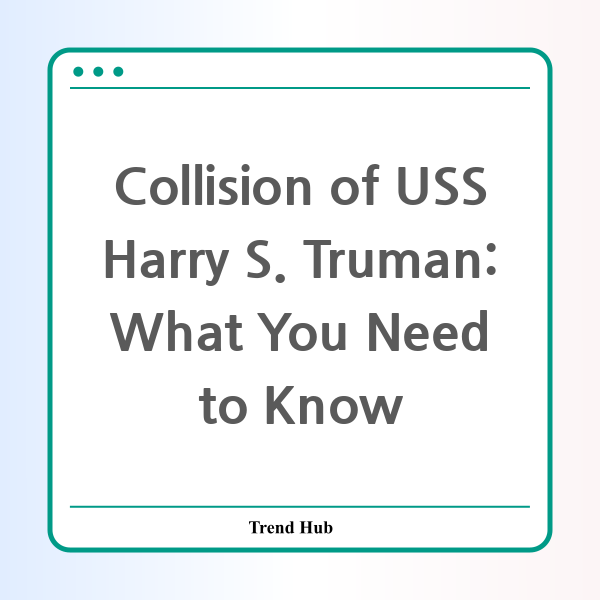* This website participates in the Amazon Affiliate Program and earns from qualifying purchases.

On February 12, 2025, the USS Harry S. Truman, a Nimitz-class aircraft carrier, was involved in a notable collision with the merchant vessel Besiktas-M near Port Said, Egypt, while operating in the Mediterranean Sea. As details of this incident emerge, it raises important questions about maritime safety and the operational readiness of naval vessels in congested waters.
The collision took place at approximately 11:46 p.m. local time and involved two significant vessels: a 100,000-ton aircraft carrier and a 53,000-ton Panamanian-flagged cargo ship. Initial reports confirm that no injuries occurred among the crew of the USS Harry S. Truman, which is home to around 5,000 sailors, and no flooding has been reported aboard the carrier. This incident marks a rare occurrence of two large vessels colliding at sea.
The USS Harry S. Truman was conducting routine operations in the Mediterranean and was in the vicinity awaiting to enter the Suez Canal, aimed at transiting back into the Red Sea. This area, known for its busy shipping lanes, has been a focal point for various military operations, especially regarding the ongoing threats posed by Houthi militants from Yemen targeting commercial vessels.
The U.S. Navy has stated that the propulsion plants of the carrier were unaffected and are in a stable condition, and the ship's capability for maritime operations remains intact. However, the damage assessment is ongoing, with officials indicating that the damage to the carrier is reportedly above the waterline. It remains unclear how this incident will impact the carrier's future operations.
This collision raises significant concerns regarding naval operational protocols, particularly in high-traffic areas where both military and commercial vessels operate. The United States Navy emphasizes rigorous training and adherence to maritime traffic laws, yet accidents such as these underscore the necessity for ongoing evaluations of maritime navigation practices.
The Navy has initiated an investigation to explore the circumstances surrounding the collision, evaluating the actions taken by both vessels leading up to the incident. While it is fortunate that there were no injuries or severe damage, this event could prompt a review of strategies to improve safety and prevent similar occurrences in the future.
In recent years, there have been growing concerns about maritime safety, particularly with increasing naval operations alongside commercial shipping traffic. As naval vessels engage in exercises and missions, the potential for accidents remains, highlighting the importance of situational awareness and effective communication between different types of vessels. The incident involving USS Harry S. Truman serves as a critical reminder of the complex environment in which both military and commercial interests must navigate.
It is important to continue following updates from the Navy regarding the investigation and any steps that may be taken to enhance maritime safety protocols moving forward. As inquiries unfold, the implications of this collision will likely resonate across naval and commercial sectors as lessons are learned from this unfortunate event.
* This website participates in the Amazon Affiliate Program and earns from qualifying purchases.